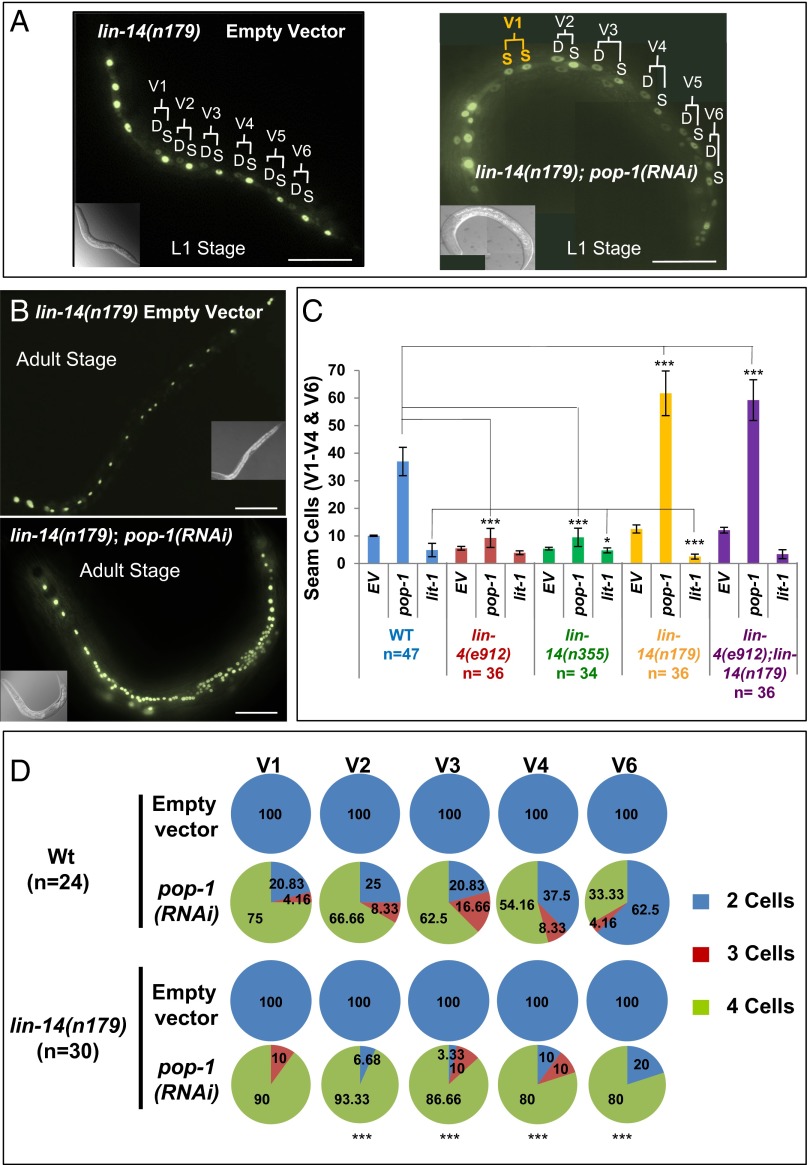Fig. 3.
lin-14 modulate asymmetric and symmetric cell fates. (A) Effect of pop-1(RNAi) on lin-14(n179) L1 larvae at permissive temperature 15 °C showing GFP-marked seam cells after control RNAi (Left) or pop-1(RNAi) (Right). S indicates a seam cell and D indicates a differentiated cell based on the location, size, and shape of the nucleus, using differential interference contrast (DIC) microscopy (9). (B) Representative of lin-14(n179) young adults (YA) stage at 20 °C showing GFP-marked seam cells after control RNAi (Upper) or pop-1(RNAi) (Lower). (C) Effect of pop-1(RNAi) and lit-1(RNAi) compare with empty vector (EV) control on seam cells numbers in lin-4(e912), lin-14(n355), lin-14(n179), and lin-4(e912);lin-14(n179) backgrounds at 20 °C. (D) Quantitative analysis of the effects of lin-14(n179) on the sensitivity of L2 V1-V4/V6 seam lineages to pop-1(RNAi) at 15 °C. In the second cell division in L2 stage, each V1–V4/V6 seam cell undergoes two rounds of division producing two seam cells and two differentiated cells per lineage. (Upper) Effect of pop-1(RNAi) on individual V1-V4/V6 seam cells in WT by changing the asymmetric to symmetric division producing three or four seam cells. The production of four cells is pronounced as the result of hypersensitivity of lin-14(n179) to pop-1(RNAi) (Lower). Anterior is to the left. Error bars indicate ±SEM. *P < 0.05, **P < 0.01, ***P < 0.005, two-tailed t test. (Scale bar, 50 μm.)

